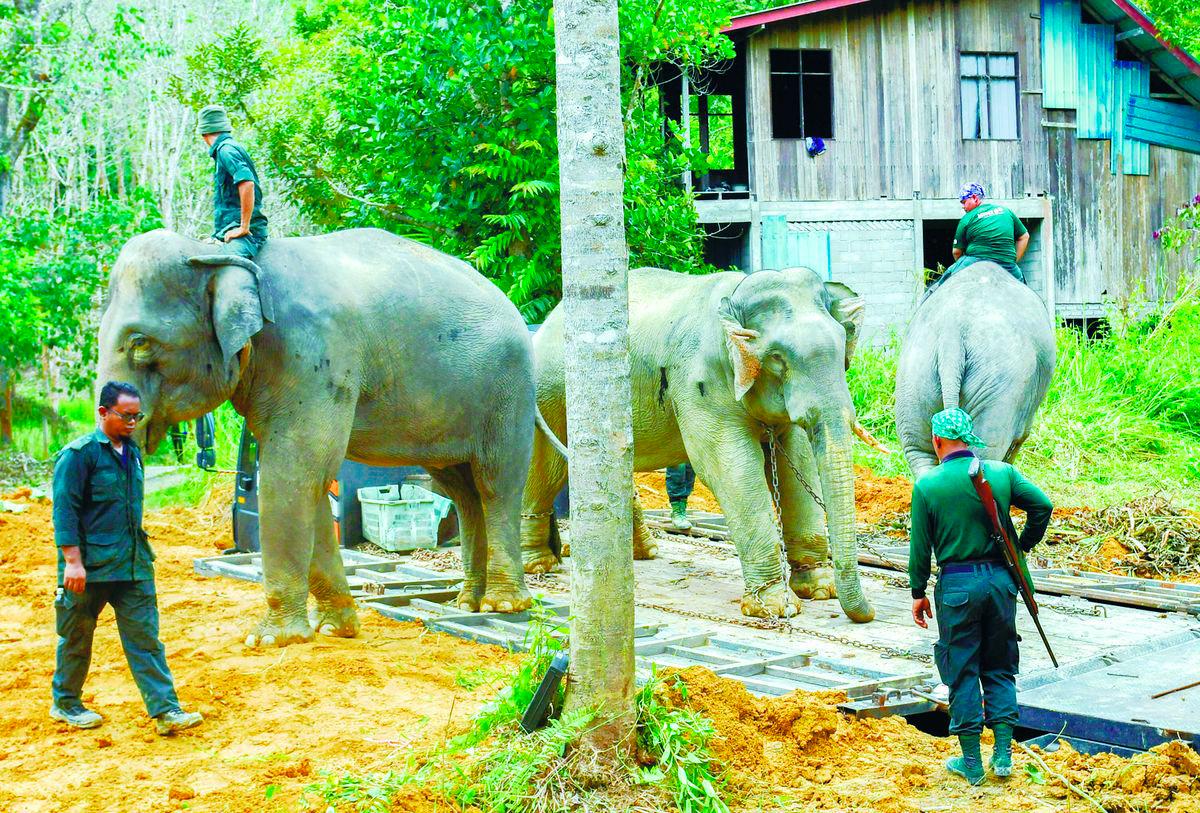IT happened just after dawn. On May 11, as the mist hung low over the East–West Highway in Gerik, a five-year-old elephant calf stepped out from the forest beside his mother.
To him, the road was not a threat; it was simply another clearing between trees, a quiet path between safety and river, between yesterday and tomorrow. But he never made it to tomorrow.
Moments later, the calf – still innocent in his gait, tethered to his mother’s shadow – was struck by a 10-tonne lorry. The massive truck crushed his small body. Shrouded in the dim dawn, he had emerged at the only crossing he knew. He did not survive.
But it was what happened next that left the nation weeping – a tragedy that pierced the hearts of Malaysians.
His mother, wholly undone by grief, refused to abandon her child. She stood vigil beside the wreckage, her trunk curling around the lorry’s chassis. She screamed an anguished, guttural cry no one who heard it will ever forget. For over five hours, she remained – nudging him, mourning him and loving him.
In that moment, the image of her maternal agony shattered whatever barriers may have existed between our species and theirs. The grief was universal and the love unmistakable. It was also, tragically, not the first time.
The day the world listens
World Elephant Day, observed every Aug 12, was not founded as a celebration but as a warning. It emerged in 2012 from a global realisation that without an urgent, coordinated action, we will lose one of Earth’s most intelligent and emotionally complex creatures.
Canadian filmmaker Patricia Sims, in partnership with Thailand’s Elephant Reintroduction Foundation, launched the day to draw the world’s gaze towards the plight of African and Asian elephants, whose populations have been devastated by habitat loss, poaching, human conflict and neglect.
Since then, World Elephant Day has become a rallying point for governments, conservationists, educators and ordinary citizens – uniting them in efforts to raise awareness, foster empathy and inspire tangible solutions to ensure these gentle giants not only survive but thrive.
However, in Malaysia, the call is far more urgent. It is no longer simply about awareness; it is also about reckoning.
We are not merely witnesses to the elephants’ decline; we are complicit in it.
With every road we carve through their habitat, every forest we clear in the name of progress and every silence we keep in the face of their suffering, we edge closer to a world without them. That is not a world we should accept.
When elephants fall
Since 2020, at least eight elephants have been killed on Malaysian roads. In just the first six months of this year alone, three more have fallen, each one a tragic emblem of our fractured landscapes and the forests we continue to erase.
Highways, like the Gerik-Jeli stretch, now slice through what were once ancient migratory paths, passed down through generations of matriarchs, routes as old as the forest itself. What were once safe, silent trails for mothers and calves have become battlegrounds of survival.
The jungle no longer shelters and the roads are unforgiving. Our elephants, the gentle architects of the wild, are being driven to the brink. Their homes are shrinking, their ancient corridors erased and their young are left broken beneath tyres and steel. Every time one dies, a mother mourns, a herd slows and a memory is scorched into the soil because elephants do not forget and neither should we.
We often speak of elephants in hushed reverence, and rightfully so. They are among the most intelligent creatures on earth, capable of abstract thought, empathy, tool use and grief. They mourn their dead, they recognise themselves in mirrors, they console distressed family members and never ever forget cruelty or kindness.
Their hearts beat with compassion and their minds map memories that span landscapes and lifetimes. When a calf dies, a herd grieves. When a matriarch falls, generations lose a teacher. To watch an elephant mourn is to witness a soul in sorrow.
More than just majestic
Elephants are not just sentient beings; they are keystone species. Without them, forests wither. Their migration patterns aerate soil, propagate seeds and shape entire ecosystems.
Their dung nourishes beetles, fungi and flora. Their trunks clear paths through thickets, allowing light to reach the forest floor and new life to bloom.
Remove elephants from the equation and the forest begins to falter. Biodiversity diminishes, rivers lose their rhythm and the delicate balance of nature starts to unravel. Their extinction would not merely be a loss of majesty; it would be a collapse of function, systems and life as we know it.
We are not without hope but hope must be made a policy. In the wake of the Gerik tragedy, voices rose, civil society demanded action and conservationists called for wildlife crossings, overpasses and underpasses.
Experts urged the implementation of speed limits and sensor-triggered signage in high-risk zones.
There are efforts underway by NGOs, wildlife departments and international partners but they are not enough unless every highway, plantation, township and policymaker commit to coexistence.
The mother in Gerik stood her ground for her son. Will we stand ours?
Final plea
As we mark World Elephant Day today, let us do more than share pictures or quote statistics. Let us remember that somewhere, deep within the Belum-Temengor rainforest, a mother elephant still roams, her calf buried in her memory. Let us recall that elephants are not icons; they are individuals – beings of thought, sorrow and joy.
Let us finally understand that every time we lose an elephant, we lose a part of ourselves – our compassion, ecology and heritage. The next time a calf steps onto a road, let him not meet a lorry but a bridge built by empathy.
Comments: letters@thesundaily.com









